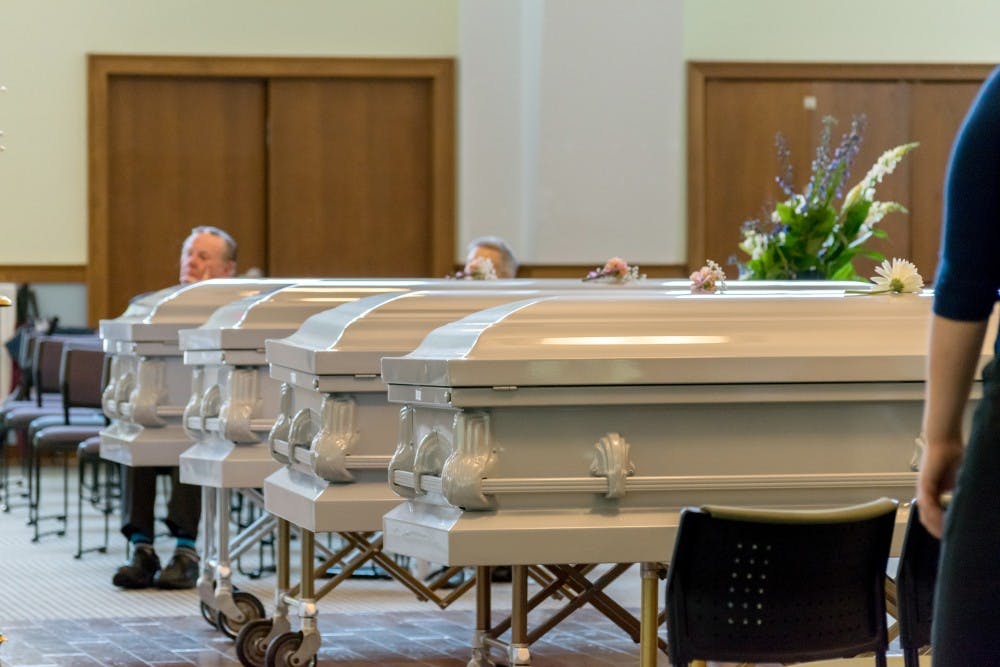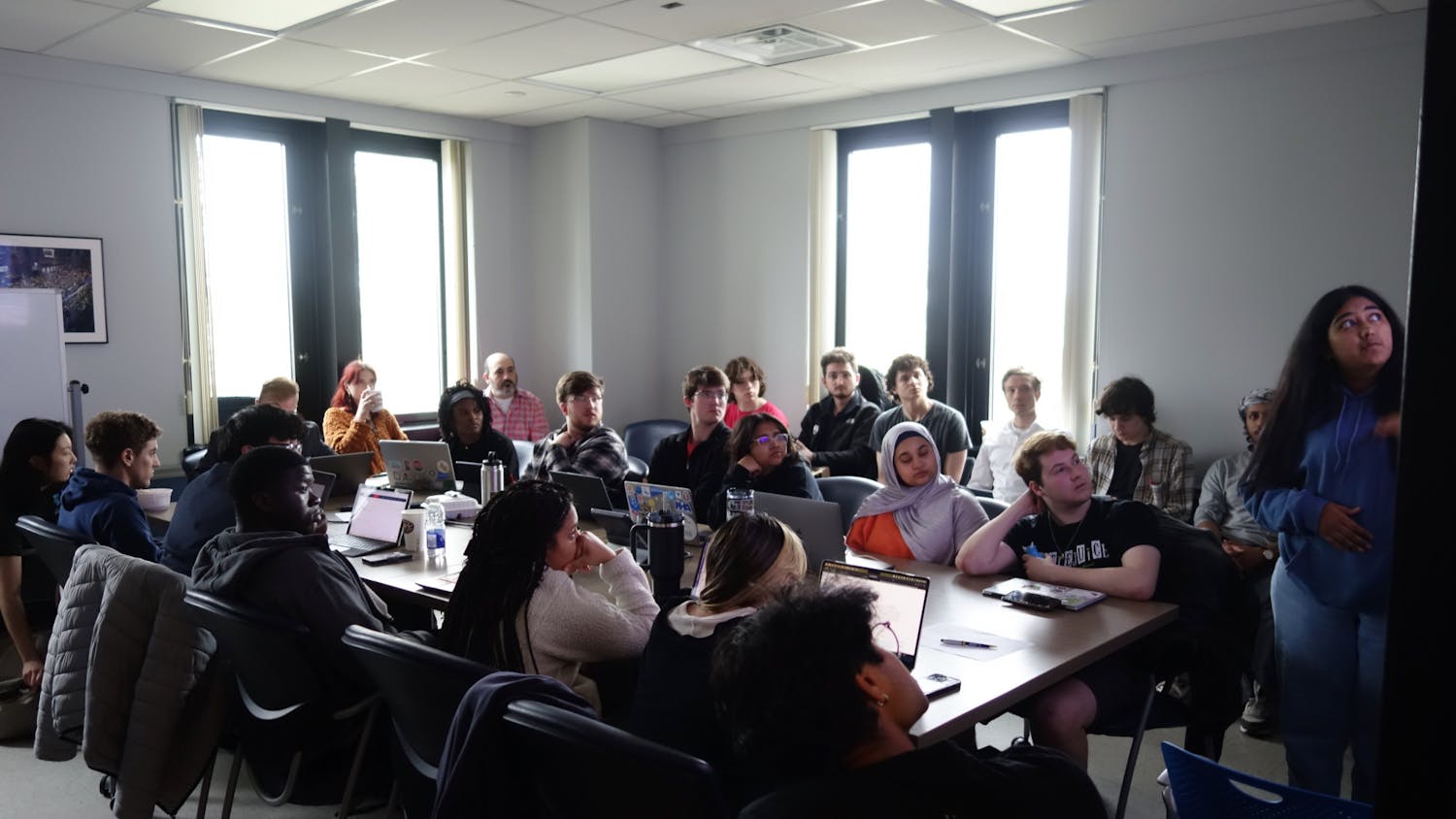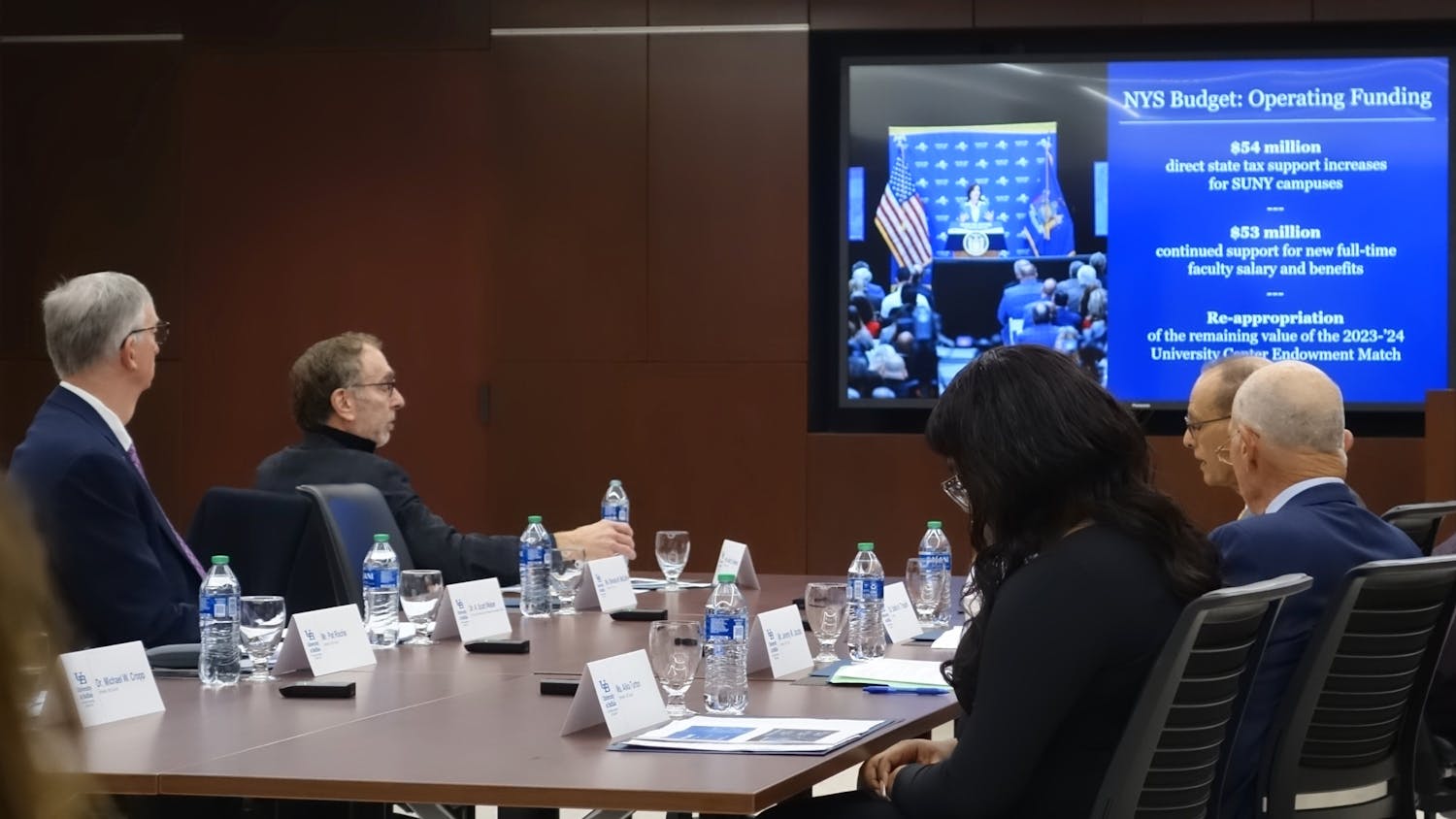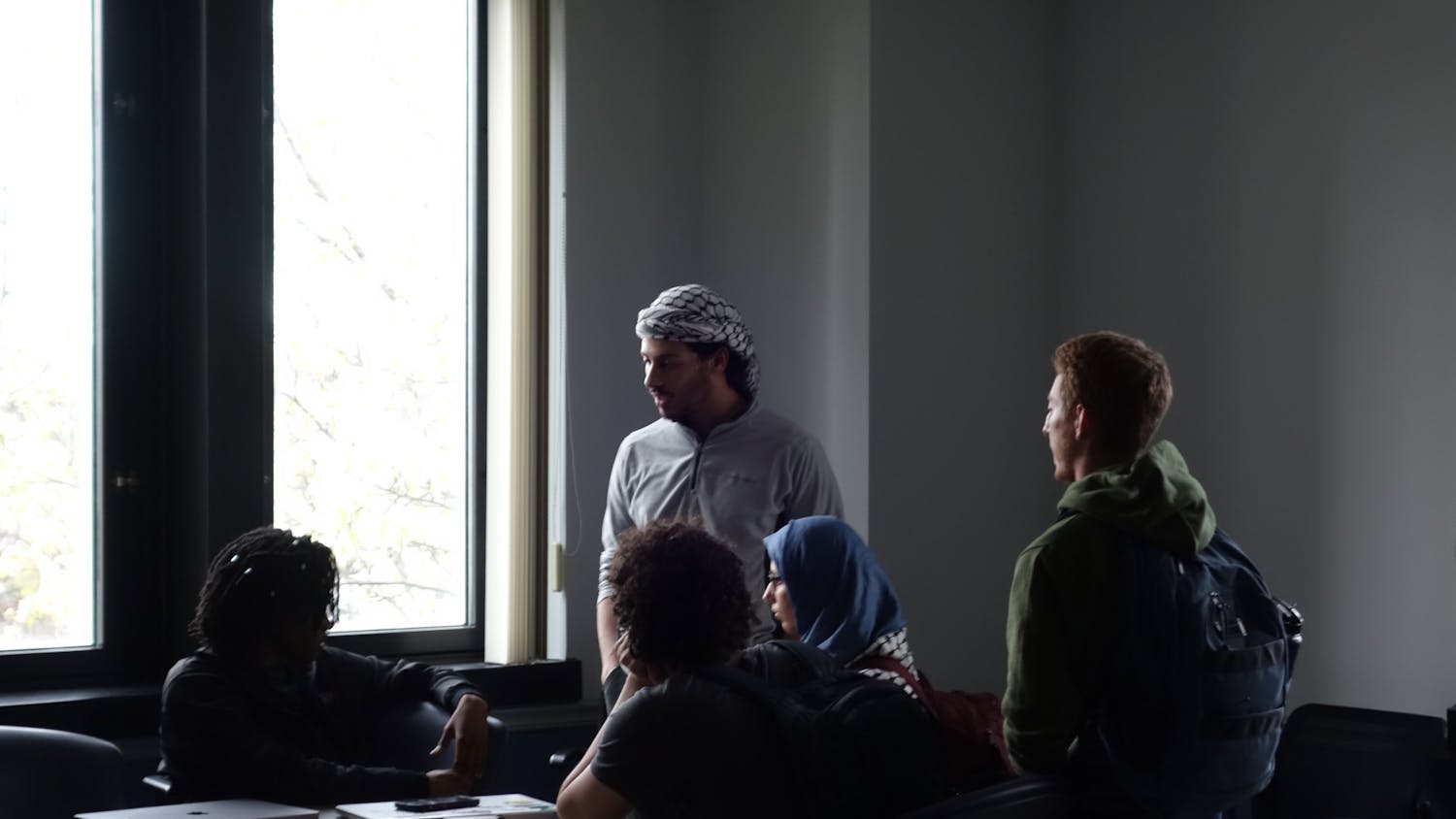Their names were Michael and Frederica.
Michael was an Irish immigrant who worked on the docks unloading lumber, before an injury rendered his leg useless and his family impoverished. Frederica was the wife of an alcoholic, who beat her and cursed her every time he drank.
UB researchers called these people Michael and Frederica, but even tireless community research efforts were not able to name the 372 people whose remains were discovered in unmarked graves on UB’s South Campus.
They learned how these people lived and died; how they hurt, how they loved, what lengths they went to provide for their family. And so they called them Michael and Frederica.
On Wednesday morning, the Department of Anthropology culminated nearly a decade of research to honor these individuals with a memorial service. This was a chance to tell their story one more time before respectfully laying them to rest. The ceremony was held at the Newman Center near UB’s North Campus on Skinnersville Road.
Co-lead and SUNY Distinguished Professor Joyce Sirianni gave a eulogy in her colleague’s absence, clinical assistant professor, and co-lead, Douglas Perrelli. Sirianni, joined by many of her students, was visibly tearful, at this final, poignant moment spent with the people whose lives they had worked diligently to remember.
“I’ve spent decades trying to reconstruct lives of past human populations and believe me, I’ve never met a skeleton that didn’t have a story to tell,” Sirianni said.
Although researchers were unable to name the rest of the men,
Many of the individuals buried in the poorhouse cemetery were poor or middle-class who had lost their jobs and needed refuge. They were laborers, clergy-members, watch-makers; the men,
“Well, my dear friends, we’ve tried our very best. We’ve tried and we listened to your stories. And I promise you, we will continue to tell your stories,” Sirianni said. “You’ve become part of our very being, every one of you. You have taught us that circumstances beyond our control can change the quality of our lives forever. For that insight, we are grateful.”
Vice President of Finance Laura Hubbard spoke briefly at Wednesday’s ceremony. She thanked the Department of Anthropology and the various community members who helped restore this part of Buffalo’s history.
“We know that in life, they helped build and enrich the place that we call home. And in life’s afterglow, they have informed our research, educated our students and contributed to our culture,” Hubbard said.
Reverend Patrick Keleher ended the ceremony with a closing prayer from the poet Edwin Arlington Robinson.
“No songs are ended that are ever sung, no names are dead names,
Hunter Kane, a
“Just seeing the trauma many of them experienced, as part of this marginalized community, was really eye-opening,” Kane said. “This was a really nice way to commemorate their lives.”
Through their research, the anthropology department has produced graduate and doctoral research, enabled community outreach and will continue to produce work commemorating their lives.
After the closing prayer, Danne Farrell, a bagpiper, played the song “Going Home,” as graduate students who spent years studying the lives of the 372 deceased people, now acted as their pallbearers. The group reconvened at a private committal service at Assumption Cemetery in Grand Island.
Stone Art Memorial donated a monument that reads, “In respectful memory of the men,
Sarah Crowley is the senior news editor and can be reached at sarah.crowley@ubspectrum.com





